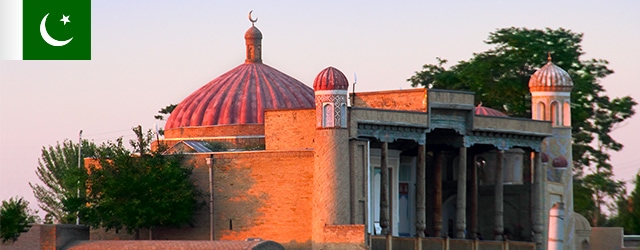Pakistan | Frontier Markets Focus

Pakistan’s ability to attract both foreign direct and domestic investment fell dramatically during the past decade. Some of the reasons why still apply.
Net inflows of foreign direct investment (FDI) into Pakistan grew to $5.4 billion in fiscal year 2008, then dropped 73% over the following five years, according to the US State Department. Since the Pakistan Muslim LeagueNawaz took office in June 2013, the net inflow has improved only slightly. From July 2013 through to March 2014, it reached $669.8 million, up 6% from $631.9 million for the same period a year earlier.
The downturn in investment also affected domestic outlays, according to Sakib Sherani, economist and CEO of market analysis firm Macro Economic Insights. “It’s not just the FDI. It’s the overall investment climate,” he says.
Several factors caused the drop—with the threat of terrorism heading the list, according to Huma Yusuf, senior analyst at Control Risks, a global risk consultancy. The country’s long-running energy shortage comes in a close second. Pakistan has a daily average 6000 megawatt hydroelectricity shortfall. Power outages in summer can last for 12 to 15 hours a day and 4 to 6 hours or more at other times, meaning that factories operate well below capacity.
The ongoing natural gas dispute—as the government has tried to raise rates and some suppliers have subsequently cut off supply—compounds the problem: Many industries had seen gas as an antidote to electricity shortages. Now a complicated system of gas allocation varies by sector and location. Further confusing the issue, bribery and political connections can lead a company to receive more gas than its formal allocation.
Specific incidents also compound investor apprehensions about Pakistan. In a case that ran from 2009 to 2013, the Pakistan Supreme Court voided a $500 million contract for the Reko Diq mining project, 75% controlled by a consortium consisting of Chilean company Antofagasta and Canadian firm Barrick Gold. “That was a very alarming disincentive,” Yusuf recalls, adding that the government is trying to reassure investors that such a fiasco will not happen again.
However, an investor with a long-term horizon and high risk tolerance could profit from several advantages Pakistan offers, starting with the size of its market. “It’s the sixth-largest country in the world [by population], and, more importantly, it has a growing middle class of 70 million people,” Yusuf says. Pakistan also has good demographics, since approximately two-thirds of the population are under 30 years of age. “[They] are going to be buying from you, not just for five years [but] for two generations at least, so it is a consistent market,” she says. The dividend also means a solid supply of labor for factories and other installations.
Moreover, since January 2013, Pakistan has had a coherent antiterrorism program that has helped foreign investors feel more confident in the market—and that partially explains the increase in FDI. According to Yusuf, terrorists here have a specific
ideological agenda and so may attack government installations but not commercial and industrial infrastructure. “Most people do not go that extra step [of] figuring out the nuances,” Yusuf explains.
VITAL STATISTICS |
|---|
|
Location: Asia |
|
Neighbors: India, Afghanistan, Iran, China |
|
Capital city: Islamabad |
|
Population (2014): 196.1 million |
|
Official language: Urdu but English is commonly used in business and government |
|
GDP per capita (2013): $1,299 |
|
GDP growth (2014): 3.7% forecast |
|
Inflation (2013): 7.7% |
|
Currency: Pakistan Rupee |
|
Investment promotion agencies: Board of Investment http://boi.gov.pk |
|
Investment incentives available? Some tax exemptions and reduced tariffs; export industries qualify for duty-free imports of raw materials. |
|
Ease of Doing Business rank: 2014: 110 (out of 189) |
|
Corruption Perceptions Index rank: 2013: 127 (out of 177) |
|
Political risk: Continuing dispute over Kashmir |
|
Security risk: Disagreements with India, terrorism |
PROS |
|---|
|
Wide choice of projects for FDI |
|
Stable monetary system |
|
Foreign-owned companies able to borrow from domestic banks |
|
Investments gains and dividends can be fully repatriated |
CONS |
|---|
|
Discriminatory tax regime |
|
Large number of refugees |
|
Vulnerable to shifts in commodity prices |
|
Widespread corruption |
Sources: BBC Profile; Determinants of FDI: A Case Study of Pakistan, 1981-2009, Ahmad, Dr. Salman, Department of Management Studies, University of Central Punjab, Lahore; Economic Conditions of Pakistan and their Impact on FDI, Jamshaid, Amara, 2014, National Defense University, Islamabad; International Monetary Fund; State Bank of Pakistan; Transparency International; UNCTAD; US State Department; World Bank
For more information on Pakistan, check out our Country Economic Reports.



